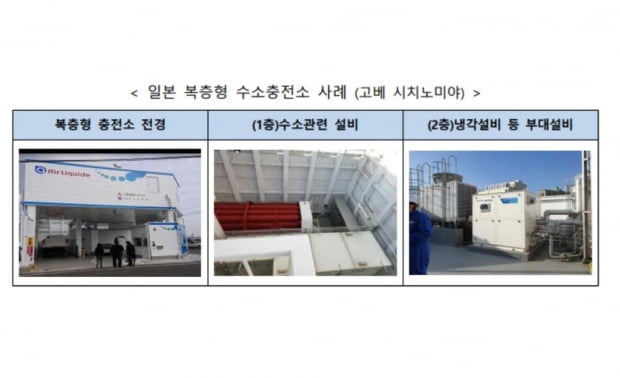-Enforcement of revision of the enforcement regulations of the High Pressure Gas Safety Management Act
In the future, drivers of hydrogen cars do not need to receive safety training. In addition, multi-layer hydrogen charging stations are allowed. The safety management of hydrogen charging stations will be further strengthened.
The Ministry of Trade, Industry and Energy announced on the 25th that the’Enforcement Rule of the High-Pressure Gas Safety Management Act’ was revised and implemented for the safety management of hydrogen vehicles and hydrogen charging stations. In the meantime, hydrogen car drivers, as well as regular drivers, short-term or surrogate drivers, and one-time drivers, such as rental car drivers, were obligated to receive safety training, which costs 21,000 won once. Then, recently, a demand for improvement of related systems was raised for reasons such as improvement of automobile safety and equity with other vehicle types. The safety training for LPG drivers was abolished in 2018, and there is no safety training for electric vehicles. Accordingly, among hydrogen cars, drivers of general passenger cars such as the Nexo are excluded from safety training. However, drivers of hydrogen buses used by many unspecified people should receive safety training in the same way as they are now. Instead, it plans to secure the same level of safety as the existing safety education by including the safety management of hydrogen vehicles in the driver’s license test and inspection of hydrogen vehicle gas leaks at hydrogen charging stations.
In addition, the standards for setting up a multi-layer hydrogen charging station were specified. Among hydrogen charging station facilities, additional facilities such as refrigeration facilities, electrical facilities, and fire extinguishing facilities are permitted to be installed on a double floor under the premise of building structural safety verification by experts such as architects to ease the burden of securing sites for charging station operators. Storage facilities, processing facilities, compressed gas facilities, and filling facilities, which are key facilities, should be installed on the ground as they are.
Safety management is further strengthened. The Ministry of Industry and Korea Gas Safety Corporation are planning to build a hydrogen charging station monitoring system that allows not only charging station operators but also Korea Gas Safety Corporation to check the status of hydrogen charging stations in real time to prevent accidents at hydrogen charging stations and to quickly respond. In order to secure the effectiveness of the monitoring system, charging station operators are obligated to transmit operation information of safety devices such as emergency shut-off devices and gas leak detectors to the monitoring system of Korea Gas Safety Corporation in real time.
Check the pressure-tightness performance of the piping connected to the storage container and the strength and durability of the storage container fixing frame are added to the inspection standards for high-pressure hydrogen transport vehicles. Through this, the safety of high-pressure hydrogen transport vehicles used for the purpose of transporting high-pressure hydrogen and storing hydrogen in hydrogen charging stations is expected to be strengthened.
 |
Safety management such as permission, technical review, and inspection is carried out for low-pressure hydrogen facilities connected to high-pressure hydrogen facilities in the same way as high-pressure hydrogen facilities. Initially, low-pressure hydrogen facilities (less than 10 bar) were not subject to high-pressure gas safety management laws, so they did not undergo separate inspections. It is expected that this revision will contribute to securing the safety of low-pressure hydrogen facilities connected to high-pressure hydrogen facilities.
An official from the Ministry of Industry said, “We plan to continue strengthening hydrogen safety management by establishing a monitoring system for hydrogen charging stations, safety evaluation, and introduction of detailed safety inspections.”
Reporter Oh Ah-reum [email protected]
Ⓒ Hankyung.com prohibits unauthorized reproduction and redistribution
